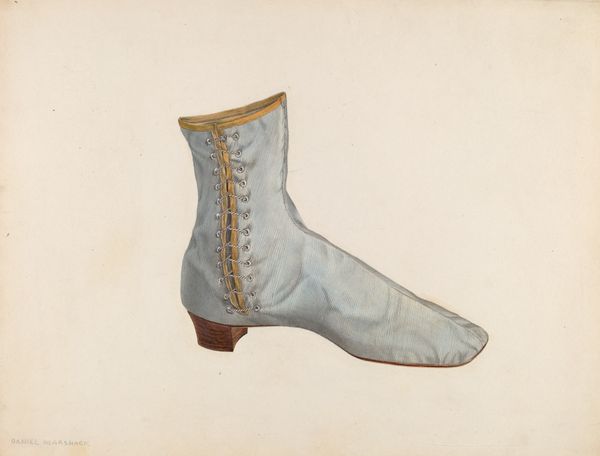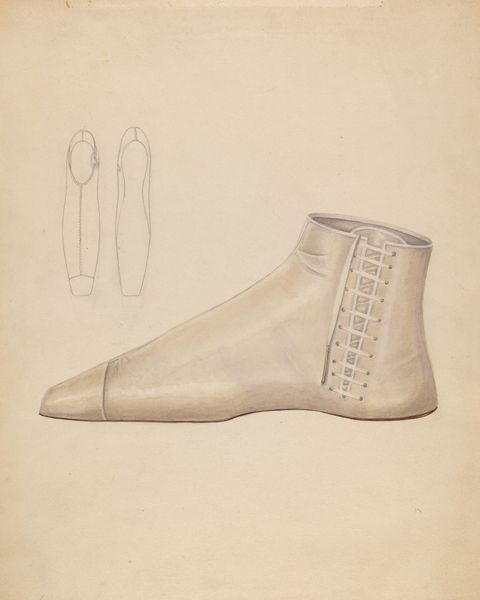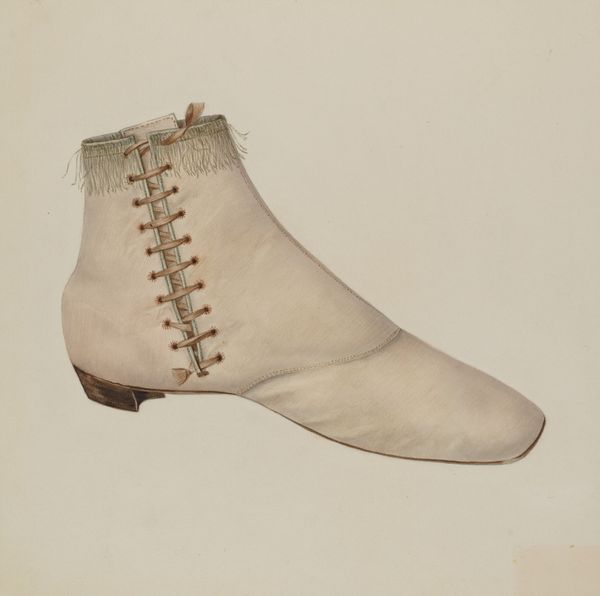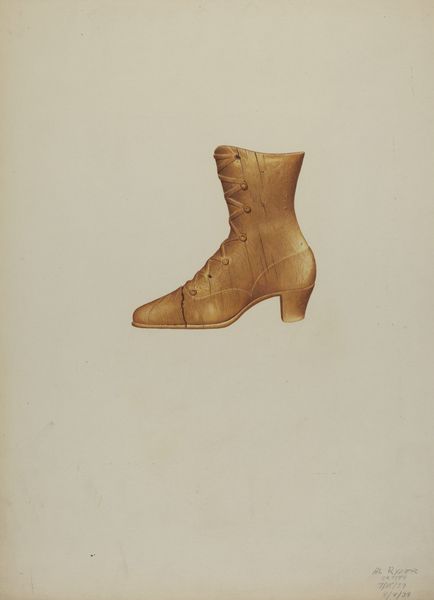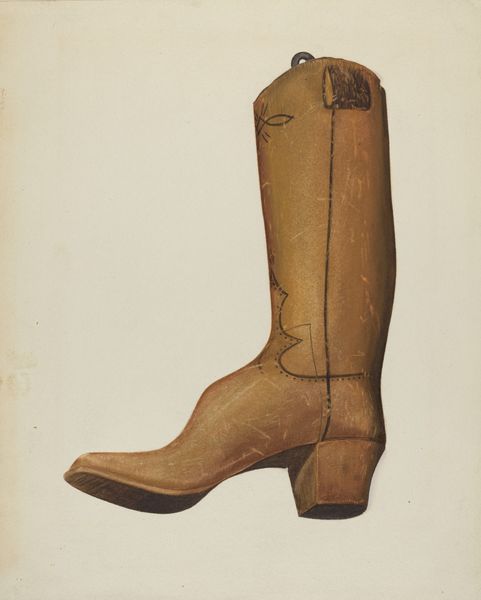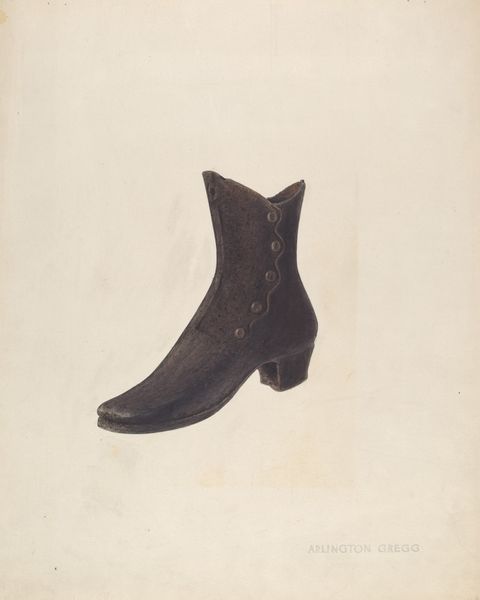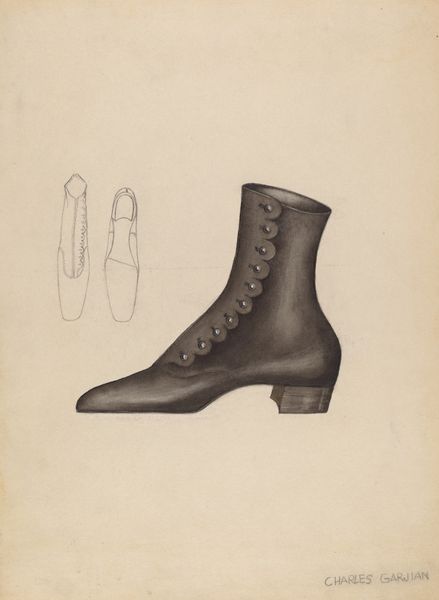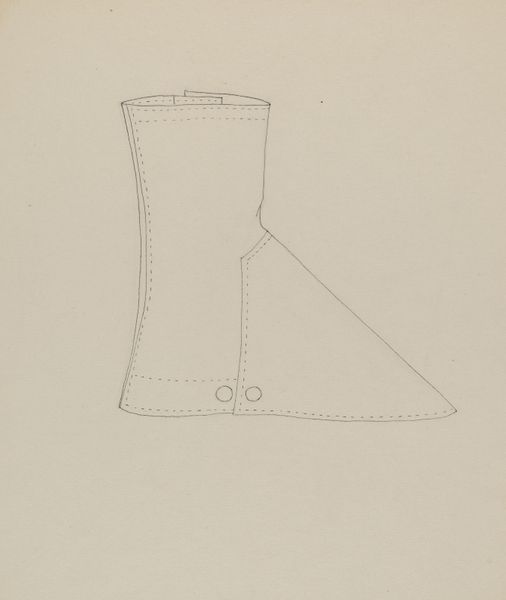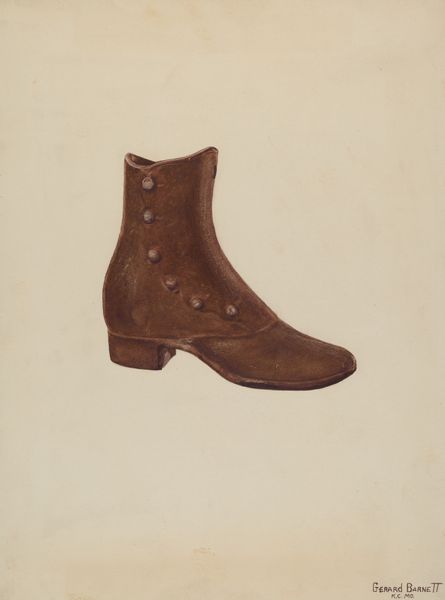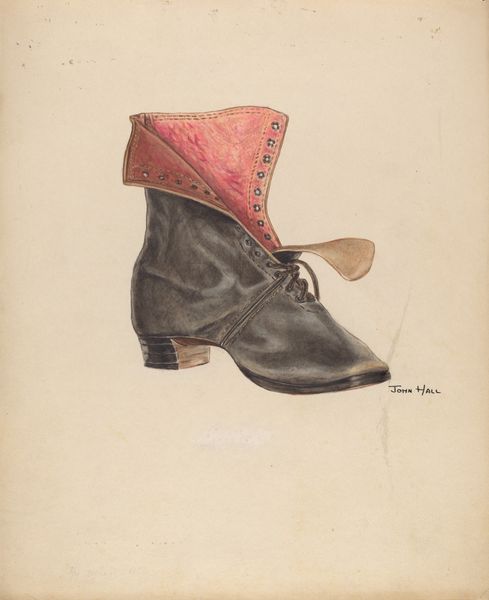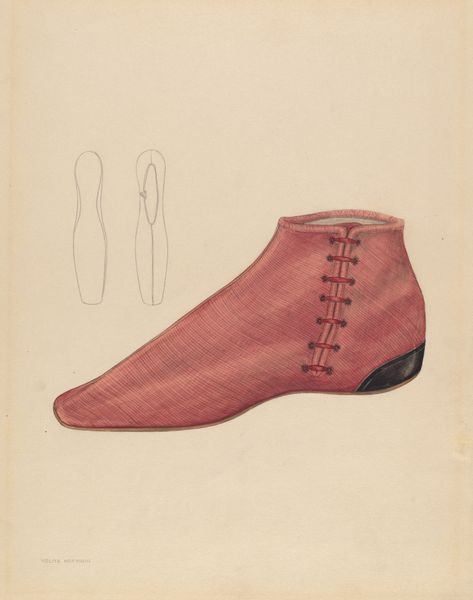
drawing, pencil
#
drawing
#
pencil drawing
#
pencil
Dimensions: overall: 28 x 23 cm (11 x 9 1/16 in.)
Copyright: National Gallery of Art: CC0 1.0
Curator: Before us, we have "Spats," a pencil drawing by Melita Hofmann, created sometime between 1935 and 1942. My first impression is…well, it's certainly spats! I mean, it's quite austere, isn’t it? Almost clinical in its presentation. Editor: Clinical but also oddly vulnerable. We're presented with a single spat, devoid of context – no wearer, no other garments, nothing to soften its isolation. To me, it speaks to the fragility of societal expectations. Curator: I see what you mean. These spats, a particular fashion accessory that denoted a certain class and status, are here reduced to an object of quiet contemplation. But considering the historical period, perhaps it's a reflection on changing social mores, the decline of that older, rigid social structure in the interwar period. Editor: Absolutely. Hofmann made this piece as social hierarchies were becoming less stable; there were shifts in power and challenges to established norms. I see this single spat not just as an aesthetic relic, but as an indictment of the artifice and constructed identities those sartorial choices represented. Curator: Yes, and the choice of medium – pencil on paper – contributes to that feeling of fragility. It lacks the permanence or ostentation of oil paint, suggesting perhaps the ephemeral nature of those social constructs. Pencil offers the immediacy of draughtsmanship but not the authority afforded other mediums, making the spats into mere historical curiosities instead of celebrated fashion items. Editor: Moreover, notice the way she meticulously renders each button, each crease. This feels less like objective depiction, and more like… documentation? Recording something before it disappears, so it feels almost forensic. It implies an examination of values, and a subtle but powerful commentary. The care she took almost feels elegiac. Curator: Well, I’m not so sure it is elegiac! Maybe her interest lay elsewhere; documenting cultural symbols of power doesn’t have to express explicit approval OR condemnation of those items or symbols! Editor: I disagree, since Hofmann, herself an immigrant, knew that social codes, traditions and garments were things imposed on outsiders, an indication of how to behave. Her focus may have had very subtle protest coded in her work. The austerity does speak volumes to me about Hofmann's position. Curator: These details really force you to think beyond its simple form. It offers a silent testament to shifting social dynamics, frozen in a single, carefully rendered garment. Editor: Precisely! An artifact, presented plainly, which makes a potent statement when seen through an intersectional lens. A small object but big impact.
Comments
No comments
Be the first to comment and join the conversation on the ultimate creative platform.


